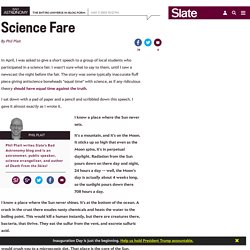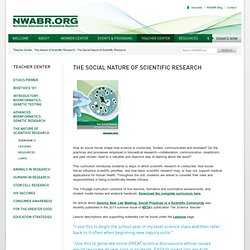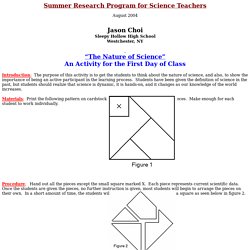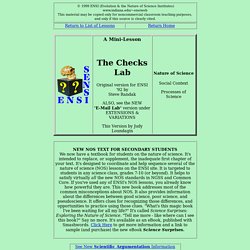

Science Fare. In April, I was asked to give a short speech to a group of local students who participated in a science fair.

I wasn't sure what to say to them, until I saw a newscast the night before the fair. The story was some typically inaccurate fluff piece giving antiscience boneheads "equal time" with science, as if any ridiculous theory should have equal time against the truth. I sat down with a pad of paper and a pencil and scribbled down this speech. I gave it almost exactly as I wrote it. I know a place where the Sun never sets. It's a mountain, and it's on the Moon. I know a place where the Sun never shines. I know a place where the temperature is 15 million degrees, and the pressure would crush you to a microscopic dot. I know a place where the magnetic fields would rip you apart, atom by atom: the surface of a neutron star, a magnetar. I know a place where life began billions of years ago. I know these places because I'm a scientist. Science is a way of finding things out.
They used physics. The Social Nature of Scientific Research. How do social forces shape how science is conducted, funded, communicated and reviewed?

Do the practices and processes employed in biomedical research—collaboration, communication, skepticism, and peer review—lead to a valuable and objective way of learning about the world? This curriculum introduces students to ways in which scientific research is conducted, how social forces influence scientific priorities, and how basic scientific research may, or may not, support medical applications for human health. Throughout the unit, students are asked to consider their roles and responsibilities in being scientifically literate citizens. The 118-page curriculum constists of five lessons, formative and summative assessments, and student media review and analysis handouts. Download the complete curriculum here. An article about Gummy Bear Lab Meeting: Social Practices in a Scientific Community was recently published in the 2013 summer issue of NSTA's publication The Science Teacher.
ENSI/SENSI Lesson List: Nature of Science. The Nature of Science - An Activity for the First Day of Class. Summer Research Program for Science Teachers August 2004 Jason Choi Sleepy Hollow High School Westchester, NY “The Nature of Science” An Activity for the First Day of Class.

Lesson: Nat. of Sci. mini-lesson: Checks Lab. Before Doing this lab, consider doing the NEW High-Tech Version: The E-Mail Lab.

(Details below under EXTENSIONS AND VARIATIONS. TEACHER PREPARATIONS: 1. Because this lesson provides an excellent opportunity to understand important elements of the Nature of Science , be sure to read our General Background Information, with our Rationale and our Approach, and tips for Presenting the lessons for maximum effect and Dispelling some of the popular myths about science. 2. In any of the discussions expected with the class, select a few key items (important concepts) that lend themselves to interpretation, and introduce class to the Think-Pair-Share (TPS) routine dealing with those items. 3. 4. 5. 6. 7.
We have TWO VERSIONS of this activity available here. SET A: 16 checks: 4 checks/sheet; WITH check numbers note that the printed instructions say "...pull 4 checks... " SET B: 16 checks: 4 checks/sheet; NO check numbers; note that the printed instructions say "...pull 4 checks... "